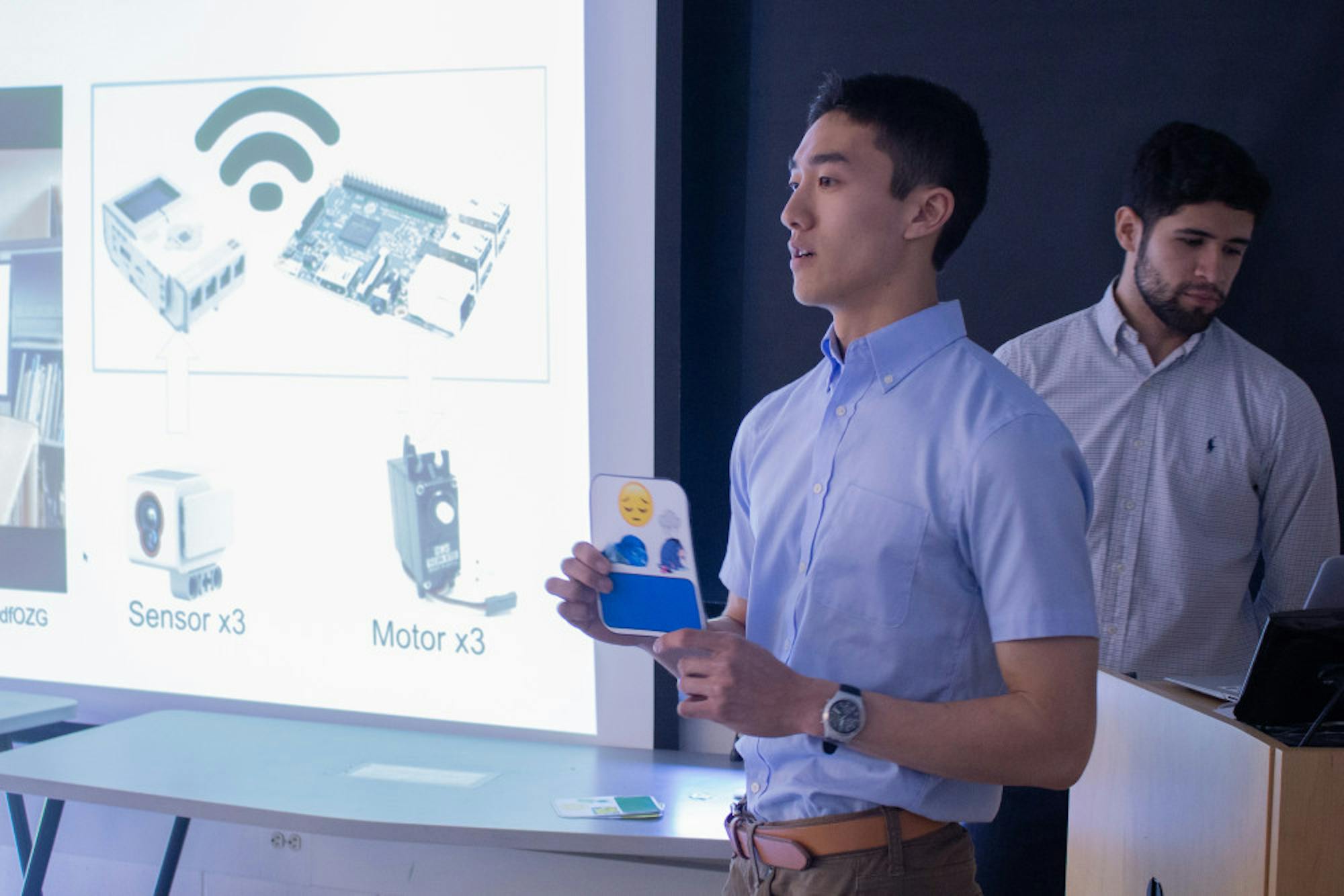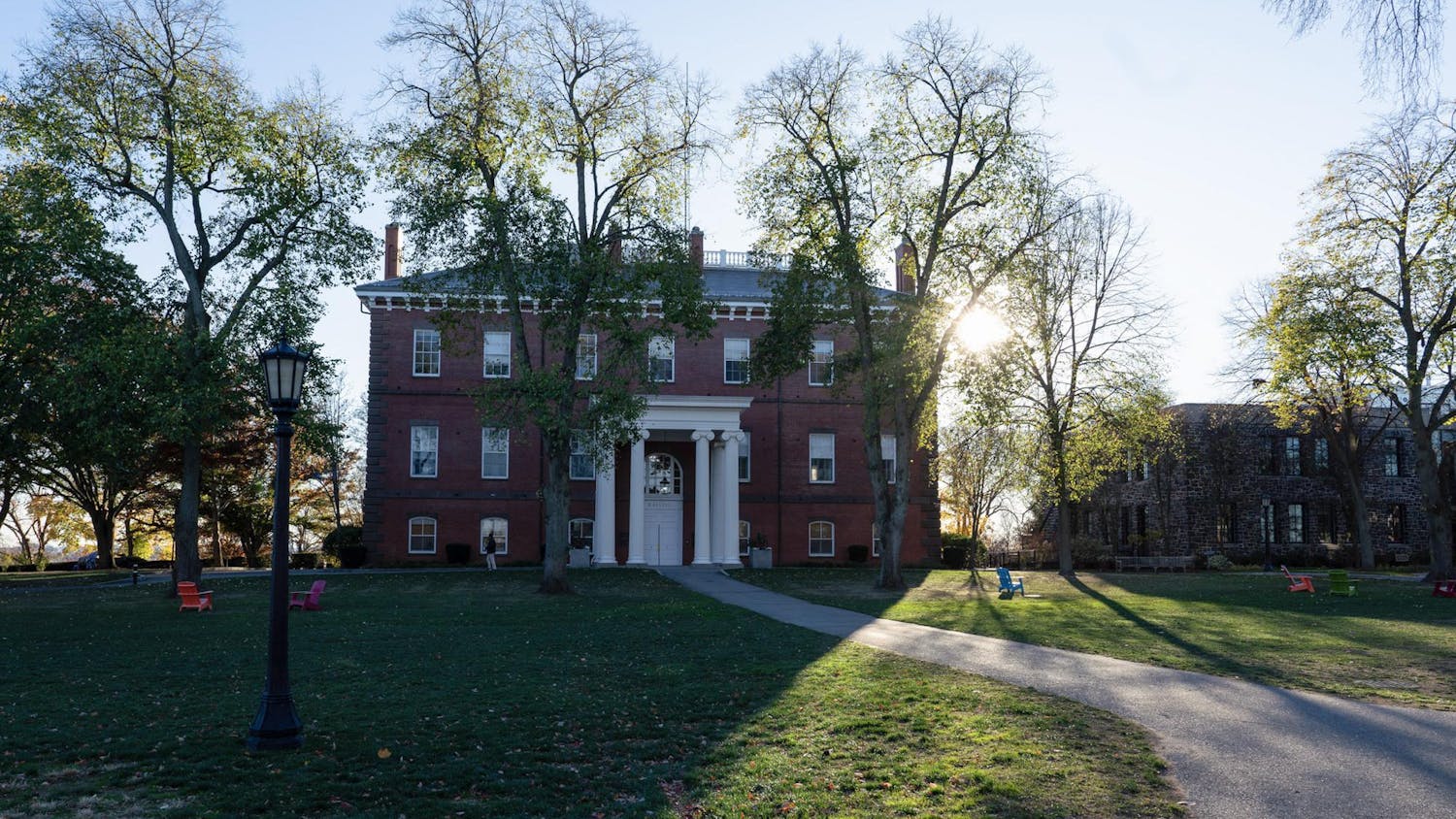Tufts students in the courses “Children and New Technology” (CSHD-0114) and “Robotics and Mechatronics” (ME-0084) are collaborating to create learning technologies intended to help young children learn new concepts and skills, according to “Robotics and Mechatronics” ProfessorEthan Danahy. Children from the Eliot-Pearson Children’s School, an on-campus laboratory school, are testing these technologies at Tufts, according to “Children and New Technology” Professor Marina Bers.
The collaboration between these two classes has been ongoing for several years and aims to enrich the learning experience for students in both classes, according to Bers.
“In this project, [Professor] Marina Bers from Child Development and I … collaborated together to see if we could find common ground between our two, very different disciplines and create an educational experience that, for the individual students in the individual courses, delivered a meaningful cross-disciplinary experience highlighting the role of their learning in a real-world context, while still delivering the expected core content,” Danahy said in an email.
Both classes met together for one session a week at Eliot-Pearson to work in small interdisciplinary groups in addition to attending one class a week separately, according to Bers’ teaching assistant, Kathleen Robinson.
“[Professor] Bers' class focused on Child Development concepts while my Mechanical Engineering students enrolled in the robotics class learned about robotics theory and implemented small example projects to reinforce those ideas,” Danahy said. “Then, as the students met each week all together, they could incorporate those disciplinary ideas into the larger cross-disciplinary semester-long project.”
Students also spent time outside of class meeting in groups of four to eight to work on their projects, according to Danahy.
The projects are aimed at teaching children, ages four through seven, various skills and tasks, according to Robinson.
“The goal of the project is different for each group,” Robinson told the Daily in an email. “One new technology helps teach children the engineering process, another more clearly defines fractions, another helps children understand emotions.”
The project primarily serves to benefit undergraduate and graduate students in both classes, however, through exposure to an interdisciplinary and collaborative work setting, according to Bers.
“Marina and I are both strong believers in experiential learning, and that through hands-on, project-based learning that is situated within a context and addressing the needs of a client, you'll best be able to not only learn how to process and apply the theoretical content, but will develop a deeper long-lasting understanding of it,” Danahy explained. “It was very much up to the students to bring their own ideas, creativity, and understanding of the content to the project, collaborate in interdisciplinary groups with other peers they just met, and by the end of the semester create a ... solution that appropriately addressed the self-selected challenges they themselves came up with.”
Danahy and Bers said they hope to extend the impact of this collaboration beyond their own classes and see an expansion in interdisciplinary courses and opportunities at Tufts.
“I would like to see something like this continue not just for this specific course, but for other cross-disciplinary courses at Tufts to partner up, collaborate, and develop curriculum that bridges both different disciplinary content as well as theory and practice,” Danahy said. “While I hope to keep teaching in this style, I also hope to see other professors (through their own personal inspiration or administrative support) also explore collaborative experiences like this in developing new, innovative teaching strategies.”
Upon completing their projects, students had the opportunity to present their work to a panel of education and technology industry professionals and receive feedback, according to Robinson.
The panel of experts included Co-Founder and CEO of Modern Robotics Steve Barker, Director of the Eliot-Pearson Children’s School/Laboratory School at Tufts University Hanna Gebretensae, Senior Educational Concept Developer at Lego Group Cathy Helgoe, Lecturer in Child Development and Director of the Evelyn G. Pitcher Curriculum Resource Lab Bruce Johnson and Co-Founder and CEO of KinderLab Robotics Mitch Rosenberg, according to Robinson.
Students from these classes presented their work on new learning technologies intended for children on Tuesday, April 24, and will present again today from 12:00 to 1:15 p.m. in the Eliot G. Pitcher Curriculum Resource Lab of the Eliot Pearson Department of Child Study and Human Development, according to Bers.
Child Development and Mechanical Engineering classes collaborate to teach children robotics

A student presents the technical aspects of his robot for Children and New Technologies, a class cross-listed with the Child Studies and Human Development and Mechanical Engeineering departments in which students develop robotic toy products for children, in the Evelyn G. Pitcher Curriculum Resource Lab of the Eliot-Pearson Children's School on April 24, 2018.





